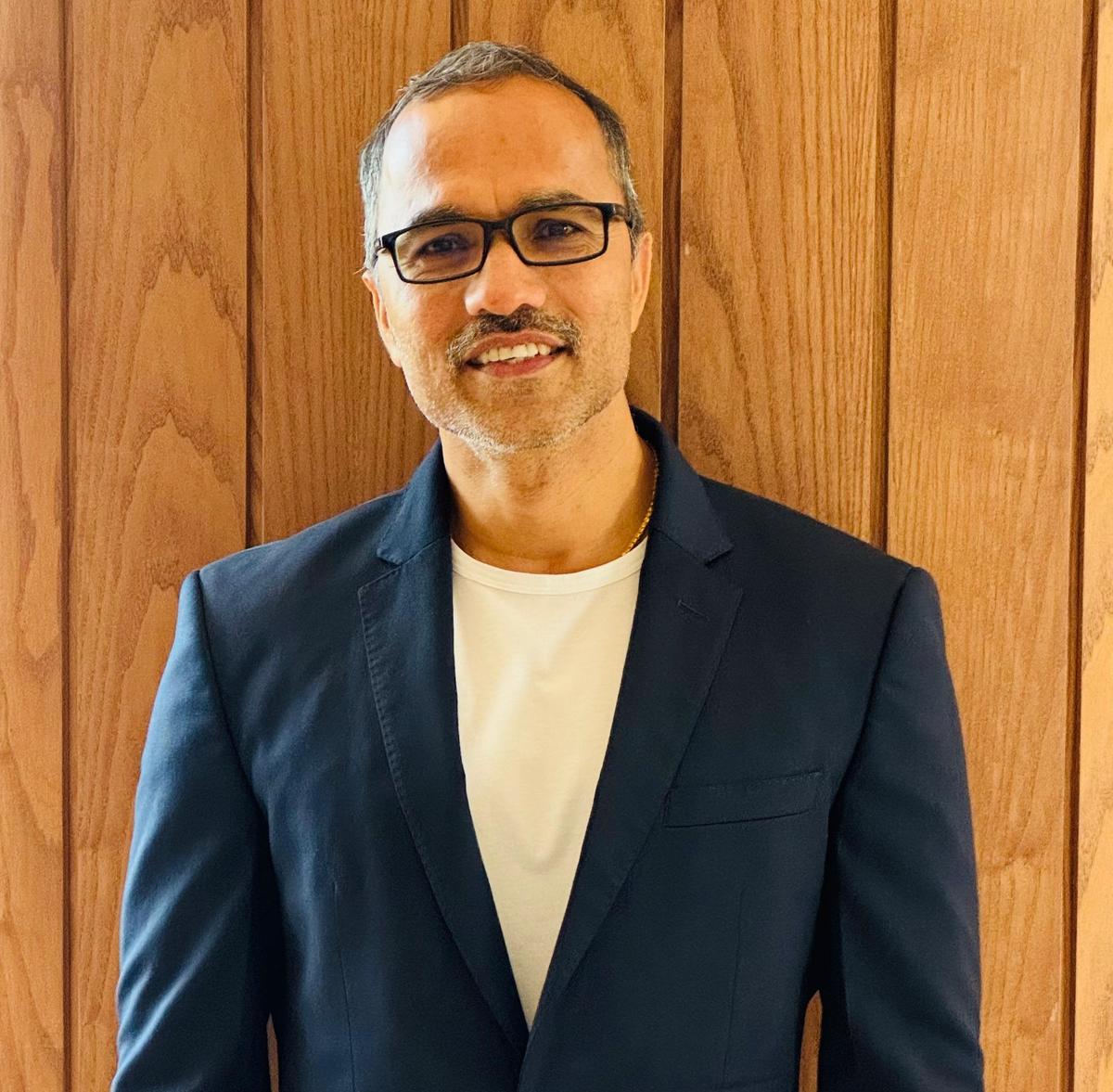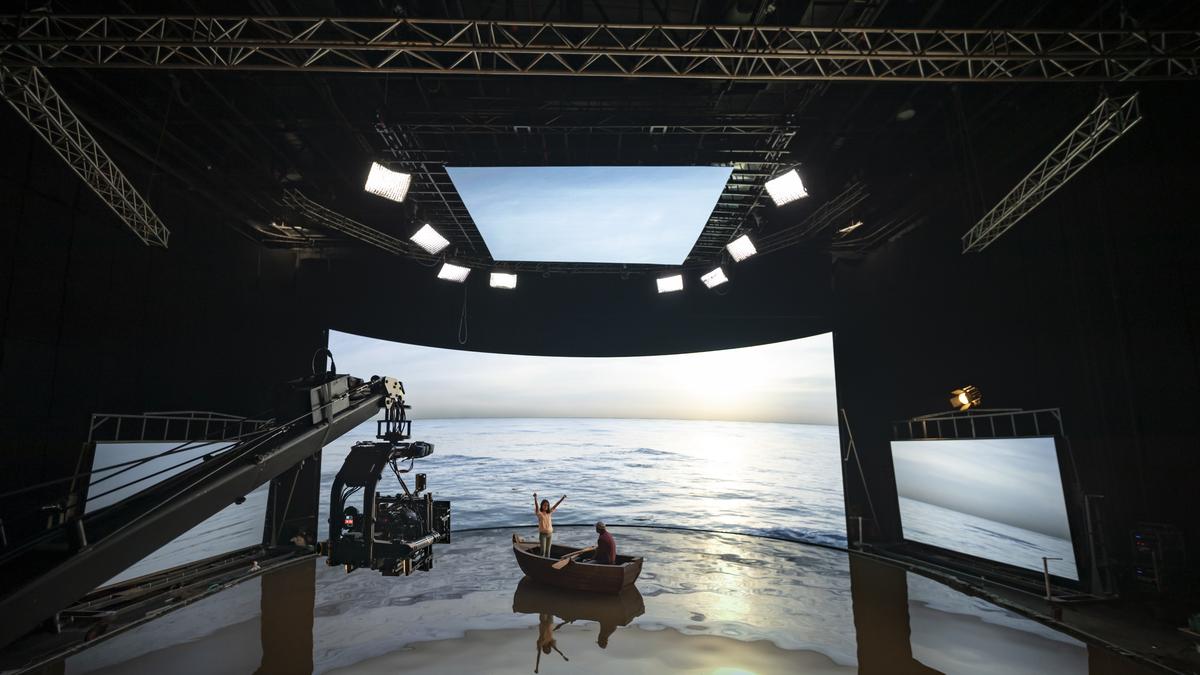Virtual Production Stage at Annapurna Studios
| Photo Credit: Special Arrangement
Tucked away at Annapurna Studios Annexe, Hyderabad, is the ANR Sound & Vision unit, a post-production facility that enables filmmakers to get a holistic picture of the final output before a film is released in theatres. This unit, with a Virtual Production Stage and India’s first Greenfield Dolby Atmos Premier Sound Mixing Theatre, are some of the facilities the studio is proud of. Founded by the late actor-producer Akkineni Nageswara Rao, Annapurna Studios is celebrating its 50th year and will soon inaugurate a motion capture facility in partnership with a Hollywood-based company.

CV Rao, chief technology officer, Annapurna Studios
| Photo Credit:
Special Arrangement
The studio’s executive director, Supriya Yarlagadda, says the integration of audio and visual post production facilities marked a significant move in the studio’s evolution. “A few years ago, directors had to visit different labs to complete sound mixing and the visual output, with colour correction. The integration of audio and visual files happened at a vendor’s facility (Qube, for instance) before a film’s theatrical release. It was tough to gauge the final output. My uncle (Nagarjuna Akkineni) once asked in frustration, ‘can’t I see how our film finally looks before release?’ We worked towards having all the post-production facilities at our premises.”
The studio’s chief technology officer, CV Rao, explains how the studio’s Digital Intermediate (DI) or colouring lab came up in 2011. “We began with a small DI unit with no high-end projectors. Soon, we upgraded the hardware and software, even though the market demand was minimal at the time. SS Rajamouli’s Eega was one of the first films we worked on.”
A view of ANR Sound & Vision wing at Annapurna Studios
| Photo Credit:
Siddhant Thakur
Additional DI suites, visual effects stations and other facilities came up eventually. Cinematographer KK Senthil Kumar and team worked on Eega and later the Baahubali films at the studio.
“It was time to look into the audio department so that directors could monitor editing, dubbing, colour, visual effects and sound design under one roof. The final mastered file or the Digital Cinema Package is approved by the director here,” says Rao.
The Virtual Production Stage (VPS), in partnership with Qube Cinema, inaugurated in 2023 came up after observing the changes during the pandemic, when filmmakers could not shoot in real locations. Senthil Kumar, co-founder of Qube Cinema had earlier stated to The Hindu that the production facility was built at a cost of nearly ₹21 crore and features a 20 by 60-foot curved high brightness LED screen, which can be used by filmmakers to render complex photorealistic virtual locations in real-time.

“The demand is still low,” concedes Rao. “New age filmmakers are more likely to use it in the near future.” Post the VPS, the tech team saw the scope to push further. “We are at a phase where the audiences are not frequenting theatres unless a film offers them a unique theatrical experience. Moving forward, we expect to see more films explore a larger-than-life format and create worlds with unique structures or animals for their stories. Motion Capture Facility would be the answer.”
Annapurna Studios Annexe boasts of cutting edge post production facilities.
| Photo Credit:
Siddhant Thakur
Closer home, Tamil film Kochadaiyaan experimented in motion capture. Rao explains, “Kochadaiyaan explored motion capture through 3D animation. This new facility at the studio, which will open in a few months, will help live action motion capture.”
In 2024, the studio inaugurated India’s first Greenfield Dolby Atmos Premier Sound Mixing Theatre. However, India is yet to have theatres equipped with Dolby Cinema. “Screens are expected to open in Hyderabad, Pune, Bengaluru, Kochi, Trivandrum and Trichy later this year,” says Rao.

Rajamouli’s RRR played a crucial role in the studio deciding to take the leap with Dolby Atmos. Rao sensed the opportunity of screening RRR in international theatres equipped with Dolby Cinema. He, cinematographer Senthil Kumar and a technical team travelled to Germany to process the film for Dolby Cinema projection. “The Dolby team learnt about this and decided to partner with us to open the exclusive Dolby Atmos sound mixing theatre,” adds Rao.
More films are in the pipeline, aiming to be compatible for Dolby Cinema projection. The task, Rao says, is to keep pace with international standards.”
Published – April 24, 2025 04:28 pm IST
